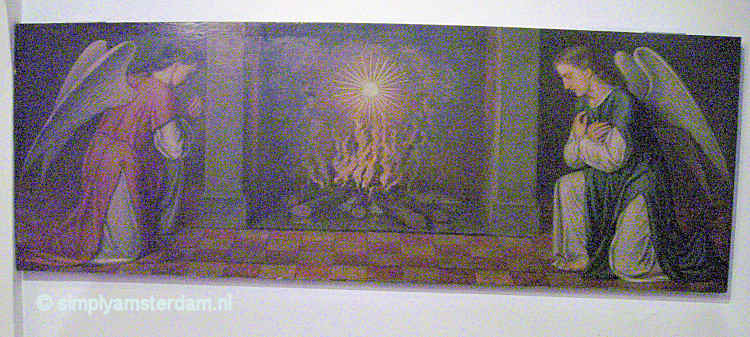The Stille Omgang ('Silent Walk' or 'Silent Procession') is a annual walk to commemorate the Miracle of Amsterdam. The procession can attract a few thousand participants.
According to tradition, on 15 March 1345, a man lay seriously ill in his house at Kalverstraat. Thinking he was about to die he called for a priest to administer the last rites, including the Blessed Sacrament. After receiving the Sacramental Bread (Hostia), the man became sick and finally vomited. As was the custom, what he had brought up was thrown into the fire. The next morning the Sacramental Bread was discovered undamaged in the ashes. It was put into a box and taken by a priest to the parish church (the present-day Oude Kerk), but on two occasions miraculously made its way back to the house at Kalverstraat. This was the beginning of the tradition known in Amsterdam as the Micracle Procession, since people had taken it as a sign that they should spread word of what had happened.
Each year, the festival week of the Miracle begins on the Wednesday after the 12th of March. From Wednesday through Saturday, holy masses of devotion are celebrated in the Beguinage. But the big annual manifestation is still the Silent Procession, held on Saturday night through Sunday morning. Thw walk is held in silence, and also without any display of religious signs or clothes.
Because of this, passers-by often wonder what the walking large group of people is all about, in the middle of the night.

Painting of fire with sacramental bread in Beguinage Chapel